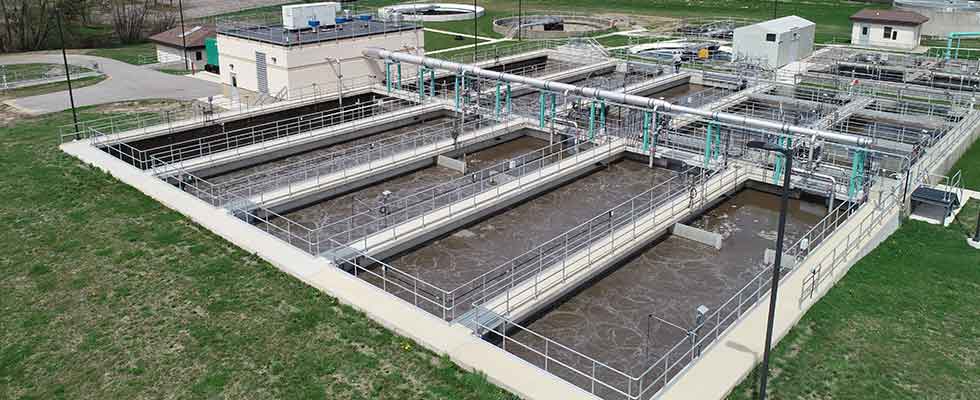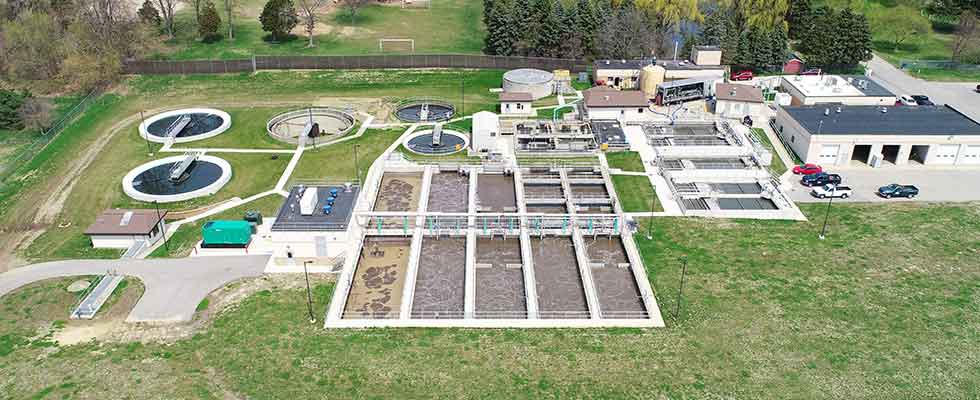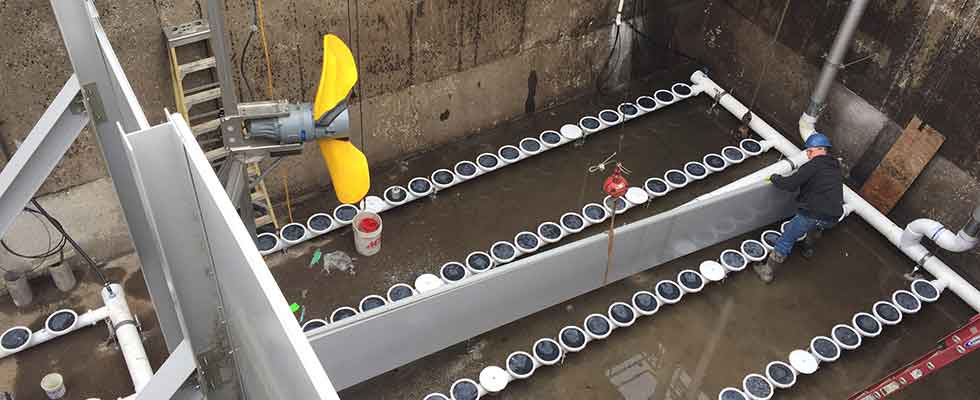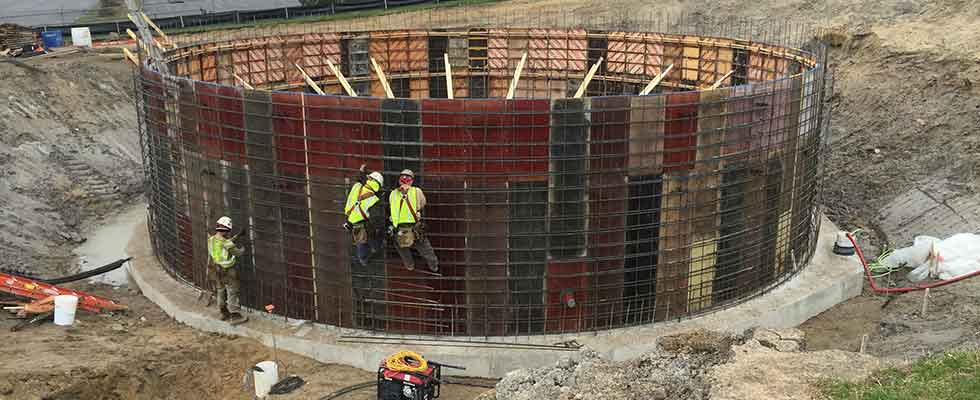
For 15 years, plans to double the capacity of Michigan’s Zeeland Clean Water Plant remained stalled as the city of Zeeland worked toward a joint wastewater treatment contract with two neighboring Ottawa County communities. As a result, maintaining efficient aeration control posed a challenge for the 1.65 million gallons per day (mgd) facility. A manually operated system combined with inadequate mixing capabilities resulted in over-aeration, excess operator attention and wasted energy. When expansion plans moved forward in 2016, the city alleviated those problems with a conventional activated sludge (CAS) solution, which has improved the plant’s effluent quality while reducing costs in several process areas.
According to Zeeland Clean Water Plant Superintendent Doug Engelsman, the facility, which was built about 100 years ago and was last upgraded in 2009, was aging in almost every area. The plant needed to better control the treatment process to improve total nitrogen (TN) and total phosphorus (TP) removal. Reducing energy, chemical consumption and wear on the blowers were also important goals.

In order to meet these challenges, the city contracted with Moore & Bruggink to provide construction engineering services for a major upgrade to the clean water plant. The construction project expanded the plant’s capacity from 1.65 mgd to 3.5 mgd average daily flow. The added flow enabled the Holland and Zeeland townships to become wholesale sewer customers.
Moore & Bruggink engaged the CAS solution provider’s process specialists to design a complete solution for the Zeeland Clean Water Plant, including aeration systems for the aerobic tanks and sludge digester, along with six low-speed mixers and two compact mixers to improve process efficiencies. The solution also included new blowers, air control valves, air flow meters and fiberglass baffle walls.
As part of the CAS solution, the plant also was upgraded with a performance optimizer control system with dissolved oxygen (DO), ammonium, nitrate and phosphate control.
“With the [biological process] there is no need for the polymer and alum that was previously used,” Engelsman said. “Any time chemicals are reduced from the treatment process, it is a win for the receiving waters and biosolids disposal program.”

The CAS solution also enables the Zeeland Clean Water Plant to have a treatment process that is environmentally friendly and features efficient equipment that saves the community electricity, Engelsman noted.
The expansion project included automation of the aeration system to increase efficiency. The adoption of online instrumentation has improved the process functionality. The CAS solution provider’s online instruments are capable of measurements at a frequency, accuracy and reliability suitable for precise process control at a reasonable cost.
Strict control of DO is required in order to create the conditions necessary to achieve biological removal of nitrogen and phosphorus. Adding automation at the Zeeland facility has improved process performance, and minimized energy and chemical usage throughout the plant.
To support real-time monitoring and control, water quality instruments were installed in the basins, including DO probes and ion selective electrode sensors, which measure ammonium, nitrate and potassium. The sensor control zones take readings and control the removal processes to maintain optimum oxygen levels.
The system also saves operator time. Plant staff can remotely control parts of the facility and minimize the need to access the system hands-on or come in during the night to address a problem. Users can also monitor energy usage and identify conservation efforts.

Leveraging advanced instrumentation, the plant used a customizable, integrated biological process control system that automatically controls blower speed and operation, and maintains stable DO concentrations the plant could not previously achieve with manual operation. As a result, the Zeeland Clean Water Plant has experienced improved TN removal and reduced energy consumption and wear on the blowers. In addition, the process control system optimizes the process for enhanced biological phosphorus removal (EBPR), resulting in effluent TP concentrations consistently below 1 milligram per liter (mg/l) with minimal to no chemical addition. This provides savings in both chemicals and operator attention.
Since it began operation, the upgraded digester aeration system has also delivered energy savings and reduced the total volume of biosolids residuals to be processed. At a 30 percent volatile solids reduction (VSR), that equates to 342,210 pounds of solids per year that no longer need disposal. Improved VSR in turn means a reduction in the amount of lime needed to stabilize the biosolids. The plant has now realized a savings of $47,000 per year in lime costs, as well as a savings of $20,000 per year in biosolids hauling costs compared to its previous system.
As a result of the plant expansion project, the city of Zeeland has saved more than $22,000 per year on energy costs. Engelsman also noted that the automated aeration control system has resulted in more efficient use of staff.
The installation of reliable, efficient equipment has also improved the quality of the effluent and provided a major reduction in chemical use.
Today, the Zeeland Clean Water Plant has two primary tanks, six biological nutrient removal (BNR) tanks featuring the CAS solution, two final clarifiers, an ultraviolet disinfection system building, an RAS/blower building, a laboratory building addition, two aerobic digesters, an odor control system and new integrated supervisory control and data acquisition (SCADA) controls.
The expansion now allows the Zeeland Clean Water Plant to receive and treat an additional 1.1 mgd of wastewater from Zeeland and Holland townships. Now, 2.2 million gallons of wastewater flow through the plant daily.
The complete project has allowed Zeeland to increase its wholesale wastewater revenues by taking on these two new systems.
Combining energy, chemical and hauling savings, Zeeland’s plant has realized a total savings of $89,000 a year from the project. The upgrade has also resulted in fewer man-hours to control the plant and fewer truck emissions and a reduction in biosolids hauled from the facility. Combined with improved effluent quality from the plant, the Zeeland Clean Water Plant upgrade project benefits the Michigan community.

